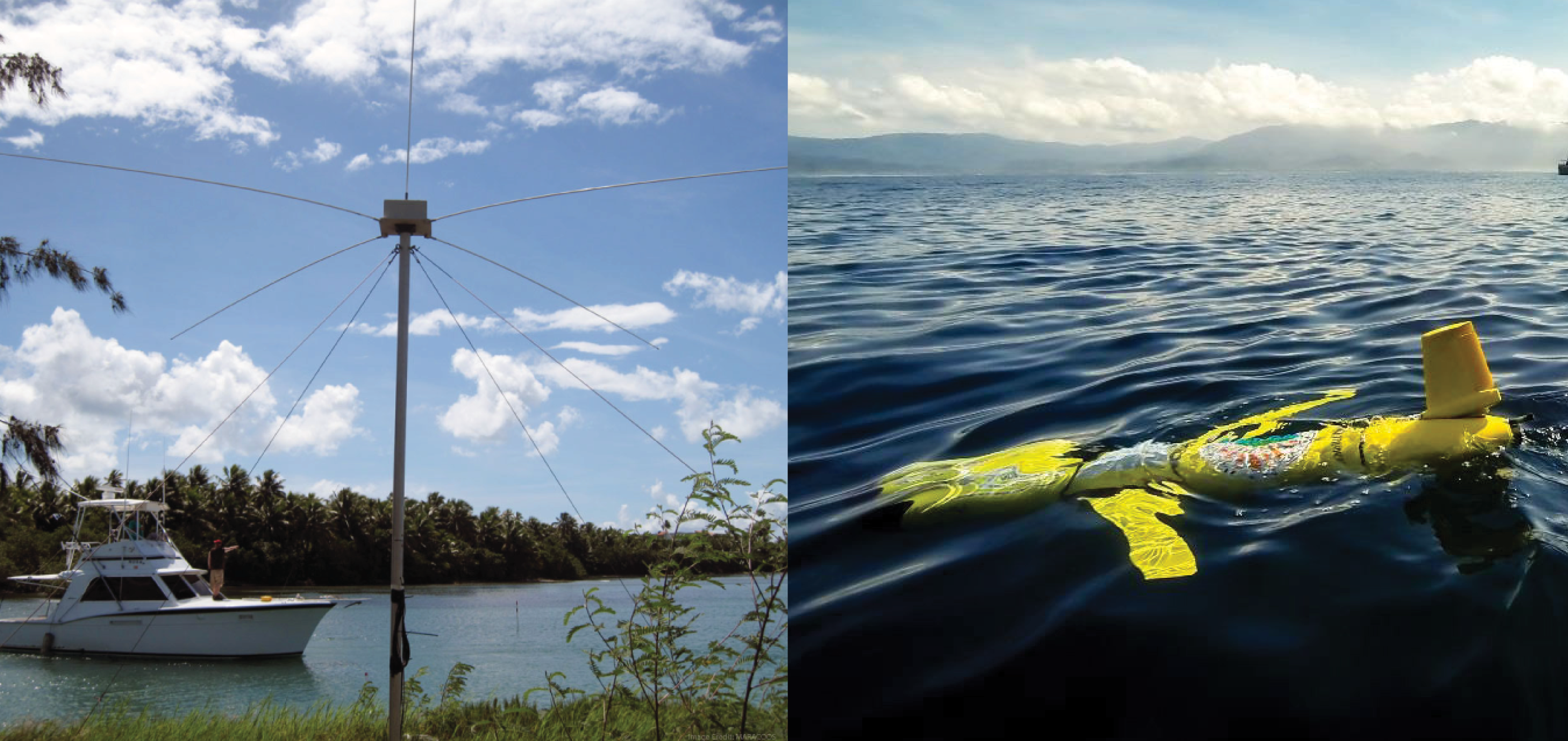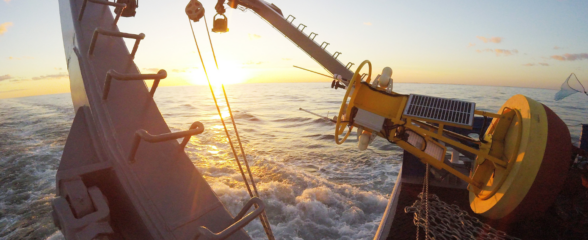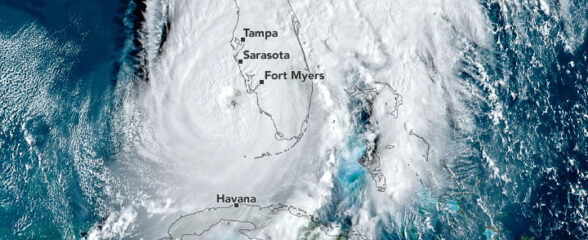
Left image is courtesy of MARACOOS and right image is credited to Ben Hollings, Blue Ocean Monitoring.
The Fiscal Year (FY) 2018 Omnibus Appropriations Act was passed by Congress on March 22, 2018. It included support for many ocean and coastal programs including the Integrated Ocean Observing System (IOOS®).
IOOS regional systems were allocated $35 million, an increase of $4.3 million from FY 17. This support will allow the eleven IOOS regional observing system to fill critical gaps in the High-Frequency (HF) Radar network and underwater glider observatory.
HF radars map the speed and direction of surface currents in real-time. Due to the large coverage area, HF radar data provide valuable input for ocean models and have been used for search and rescue, oil spill response efforts, and fisheries management. For example, the U.S. Coast Guard search and rescue operators use HF radar sea surface current speed and direction data as well as mooring data to initiate the Search and Rescue Optimal Planning System (SAROPS) to better delineate the search area. The integration of HF radar current data into SAROPS has increased the accuracy of the system and helps reduce the size of search and rescue areas, thereby increasing effectiveness of Coast Guard searches.
Gliders are underwater vehicles that relay information about subsurface conditions. In typical use gliders take measurements, such as water temperature, salinity, dissolved oxygen, from the ocean surface to depths of up to 3000 ft (1000m). Deployments of several weeks to up to 6 months are routine. The U.S. Navy estimates that gliders are 1/100th of the cost of ship-collected data. Gliders are revolutionizing ocean observing by being cost-effective, safe, and flexible.
Related news

Funding Cuts to NOAA IOOS Will Hurt the Southeast
Proposed federal funding cuts would eliminate the IOOS Regional Observations budget for next year. Contrary to the budget Congress has already approved for this year, the Executive Branch wants these proposed cuts to go into effect in 2025.

SECOORA Webinar on the Rapid Intensification of Hurricane Ian: Warm Subsurface Water on the Wide Continental Shelf
Join us Thursday, April 24th at 12 PM ET for the April installment of the SECOORA Coastal Observing in Your Community Webinar Series! This month, we will hear from Dr. Yonggang Liu from the University of South Florida. He will discuss his research on the rapid intensification of Hurricane Ian in relation to anomalously warm subsurface water on the wide...

Webinar: SECOORA Data Portal Demo
Join us on Thursday, February 20, 2025 at 1:00 PM ET to learn more about the SECOORA Data Portal and how to navigate it. Axiom Data Science will be providing an overview of the portal, including how to search the Catalog and make a custom data view.